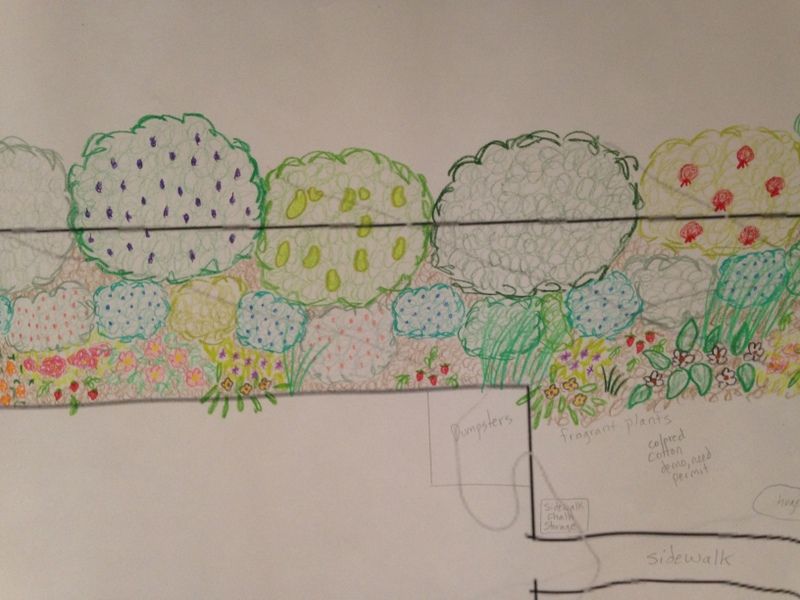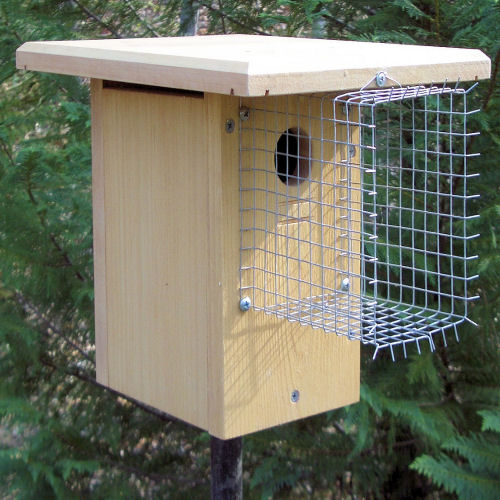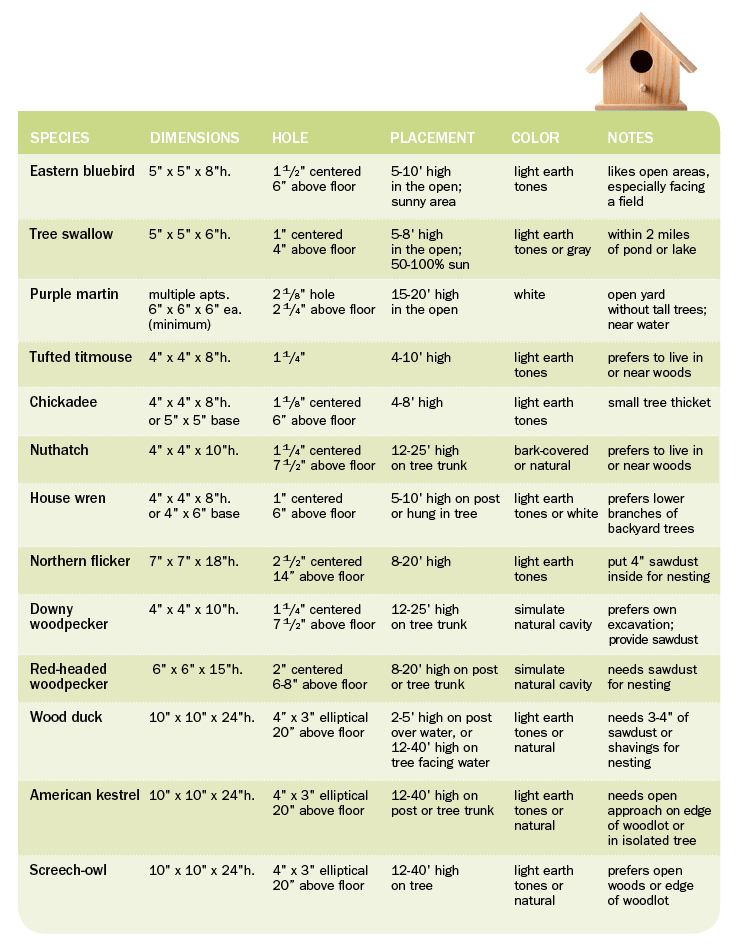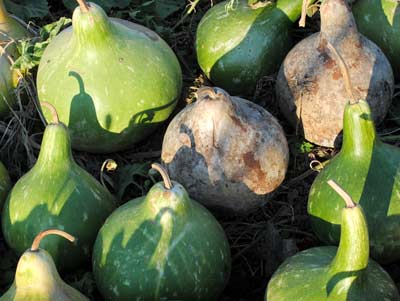Here's another update on YOUR garden, with tons of photos and permaculture tidbits:
YOUR Garden, 2/3/15
Monday, February 9, 2015
Tuesday, February 3, 2015
Birdwatching at the SC Upstate Demo Garden
I've been working out the details (in my head) of how to do birdhouses at the SCUPS garden for several weeks now and I think this is something members could really help me on. We could probably use reclaimed materials but I'd like to avoid recycling materials that haven't been proven safe for birds. I've seen some adorable birdhouse projects made from repurposed items, but they didn't look snake proof to me.
Here's our objectives:
This is how to make the guards (for a larger version click here), and this link has even more specific info on how to make the stovepipe baffle:
These are the hinged sides used to clean the birdhouse, which should have raccoon-proof latch on the bottom:
Here's some DIY bluebird house plans similar to the one in the above photo and here is another good description. Additionally, though most birdhouse recommendations say to put the house 5' off the ground, I've watched cats in my neighborhood jump that high and catch a bluebird parent out of the air as it tried to enter the house. Predator-proof sites say to use metal poles that are 8' - 10' high and sink 2' of that into the ground for stability.
Finally, here are the requirements for various species of birds. If anyone knows how to make these houses we can definitely use them:
Oh yeah, and we're DEFINITELY going to have purple martin bird houses, the site is just perfect for it -- especially after we add all our meadow wildflower plantings. It's possible I have one we can use (it is currently buried underneath my mom's Confederate jasmine vine, so I have to dig it out to see if it is in decent shape). The one I might have looks like this:
I bought some of Dr. David Bradshaw's improved birdhouse gourd seed strain to grow amongst our meadow plants. If they do well, we can add to the martin colony next year.
I know I said "finally" a while back, but we'll be adding bird feeders to the picnic area across from the garden. YAY BIRDS!
P.S. - Maybe not this year, but in the future how cool would it be to install a chimney swift tower and a rocket bat house?
Here's our objectives:
- Visible to kids at the school - fun!
- Made well, with long-lasting materials
- Able to be cleaned each season
- Discourages snakes (they kill nestlings in my yard every year, which is a natural process, but I'd rather not welcome the birds to a snake diner)
- Attracts native birds
- Discourages non-native house sparrows (click here to see why)
- Choose an area to make house wren nests to keep them happy (here's why, also check out this link that says house wrens deliberately add spider egg sacs to their nests because the spiders control the mites that attack their young -- awesome!!!)
- Discourages cats and other predators
- Make enough bird houses to put around the entire property, not just the garden. This includes the forest behind the flood catchment in the back of the school and the other boundaries. They need to be about 100 yards apart from each other.
This kind of guard discourages raccoons and cats:
This is how to make the guards (for a larger version click here), and this link has even more specific info on how to make the stovepipe baffle:
These are the hinged sides used to clean the birdhouse, which should have raccoon-proof latch on the bottom:
Here's some DIY bluebird house plans similar to the one in the above photo and here is another good description. Additionally, though most birdhouse recommendations say to put the house 5' off the ground, I've watched cats in my neighborhood jump that high and catch a bluebird parent out of the air as it tried to enter the house. Predator-proof sites say to use metal poles that are 8' - 10' high and sink 2' of that into the ground for stability.
Finally, here are the requirements for various species of birds. If anyone knows how to make these houses we can definitely use them:
Oh yeah, and we're DEFINITELY going to have purple martin bird houses, the site is just perfect for it -- especially after we add all our meadow wildflower plantings. It's possible I have one we can use (it is currently buried underneath my mom's Confederate jasmine vine, so I have to dig it out to see if it is in decent shape). The one I might have looks like this:
I bought some of Dr. David Bradshaw's improved birdhouse gourd seed strain to grow amongst our meadow plants. If they do well, we can add to the martin colony next year.
I know I said "finally" a while back, but we'll be adding bird feeders to the picnic area across from the garden. YAY BIRDS!
P.S. - Maybe not this year, but in the future how cool would it be to install a chimney swift tower and a rocket bat house?
Friday, January 23, 2015
The Founding of a Fedge (and other stories from Your Garden)
 |
| Before and after our work days Photos by Eliza Lord |
If you haven't heard the latest about the Upstate's first public, volunteer permaculture garden, get ready for the good news. Your Garden has begun. Like the recent warm, sunshiny break from winter (which made for a fantastic foray into the first plantings this past week end!), we hope this project will be a catalyst for useful permaculture plant growing and sharing. Photosynthesis everywhere, baby! Since our first work day last October, members of the South Carolina Upstate Permaculture Society have pulled ivy, cut down shrubs, dug stumps, built swale terraces, moved a monstrous mound of mulch and lovingly placed the first plants into the welcoming earth. And that is just the beginning.
 |
| Marking swales at Summit Drive Elementary. Photo by Nathaniel Lord |
 |
| diagram by Graham Burnett |
The goal for this garden is manifold in function! For SCUPS members, it will eventually provide plants and seeds, as we thin, divide and propagate on upcoming work days. For the school and community at large, it will be an educational walk, with signs added to identify plants and their functions in the ecosystem and within their guilds, as well as an opportunity for the school to incorporate permaculture related activities into their curricula.
 |
| Monarch Butterfly Photo by Eliza Lord |
And it goes without saying that the site will be a haven and habitat for many creatures besides humans.
In particular, we plan to plant lots of milkweed to aid the struggling monarch butterfly population. Birds, amphibians, lizards, snakes and other native pollinators are also most welcome.
October saw our first work day at the site, and it was a complete success. Members came from all over the Upstate and beyond to participate.
 |
| Shaping swale terraces Photo by Eliza Lord |
The major tasks we tackled included clearing a large area that was overgrown with shrubs and English ivy, and putting in some small earthworks to help the soil retain water on the steep slope.
 |
| Crushed hickory nuts Photo by Tina Huba |
Participants brought their own bagged lunches, but were regaled with tastes of local gourmet, not least of which were Eliza's mom Joan's homemade pomegranate jelly, made from the fruit from the family heirloom tree. We also had fresh, ripe fruit from the aforementioned tree, white currant tomatoes, pawpaw fruit, and maple syrup sweetened hickory nut milk from nuts patiently pounded by the teens in the group.
 |
| Young loquat Notice the green oats Photo by Eliza Lord |
Many thanks to everyone who planned, worked, donated plants or participated in this project in any way. We hope to plant and cultivate not only a garden food forest, but a culture rooted in ecological principles, earth care and people care, each living member mutually supporting, and being supported by, each of the others.
You can get involved!
We have regular work days planned, and if you cannot make it to any one of these, here is a list of plants you can donate.
Upcoming work days:
Location: 424 Summit Drive, Greenville
Tuesday, January 27, from 10am - 12pm
Every Tuesday after that from 10am - 12 pm unless otherwise announced
Saturday, February 21, from 10am - 1pm
Saturday, April 4 from 10am - 3pm
Sunday, May 10, from 10am - 3pm
Check our Facebook page for more SCUPS events and educational opportunities.
Not a member of SCUPS yet? Go here to join.
Subscribe to:
Posts (Atom)












